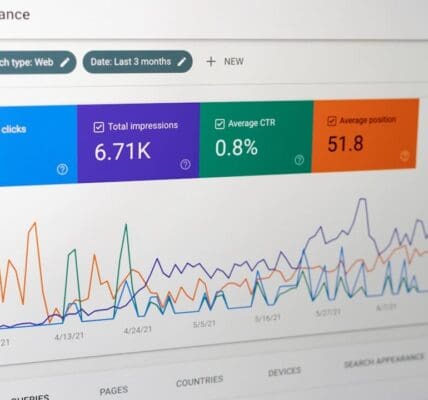Search Engine Results Pages (SERPs) are the pages displayed by search engines in response to a user’s query. SERP analysis is the process of examining these pages to understand how different factors influence rankings and visibility. This analysis is crucial for digital marketers, SEO specialists, and content creators who aim to optimize their online presence.
By dissecting SERPs, one can uncover valuable insights about what content performs well, which keywords drive traffic, and how competitors position themselves in the digital landscape. The importance of SERP analysis lies in its ability to inform strategic decisions. For instance, by analyzing the types of content that appear for specific keywords, marketers can identify trends and gaps in the market.
This understanding allows them to tailor their content to meet user expectations and improve their chances of ranking higher.
By comprehensively understanding these elements, businesses can better navigate the complexities of search engine algorithms and enhance their overall digital marketing strategies.
Key Takeaways
- SERP analysis involves studying the search engine results page to understand how content is displayed and ranked.
- Identifying competitor content helps in understanding the competitive landscape and identifying opportunities for improvement.
- Analyzing keyword usage helps in understanding which keywords are driving traffic and how they are being used by competitors.
- Evaluating content format and structure helps in understanding how to optimize content for better visibility and engagement.
- Assessing featured snippets and rich results helps in understanding how to optimize content for better visibility and engagement.
Identifying Competitor Content
Identifying competitor content is a fundamental aspect of SERP analysis that provides insights into what others in the industry are doing successfully. By examining the top-ranking pages for relevant keywords, marketers can discern the themes, topics, and formats that resonate with audiences. This process often involves using tools like SEMrush, Ahrefs, or Moz to gather data on competitors’ websites, including their most popular articles, backlinks, and social media engagement metrics.
Once competitors’ content is identified, it is essential to analyze its strengths and weaknesses. For example, if a competitor’s blog post ranks highly for a specific keyword, it may be beneficial to evaluate its length, depth of information, and engagement level. Are they using visuals effectively?
Is their writing style engaging? By answering these questions, marketers can pinpoint areas where their own content can be improved or differentiated. Furthermore, understanding the competitive landscape allows businesses to identify potential collaboration opportunities or gaps in the market that they can exploit.
Analyzing Keyword Usage

Keyword usage is a critical component of SERP analysis that directly impacts search visibility. Analyzing how competitors utilize keywords within their content can provide insights into effective strategies for optimization. This involves examining not only the primary keywords but also secondary and long-tail keywords that may be driving traffic to competitor sites.
tools like Google Keyword Planner or Ubersuggest can assist in identifying relevant keywords and their search volumes.
Are they included in headings, subheadings, and meta descriptions?
How frequently do they appear throughout the text? Understanding these nuances can help marketers craft content that aligns with search engine algorithms while still providing value to readers. Moreover, analyzing keyword usage across different types of content—such as blog posts, videos, or infographics—can reveal which formats are most effective for specific keywords and topics.
Evaluating Content Format and Structure
The format and structure of content play a significant role in its performance on SERPs. Different types of content—such as articles, videos, infographics, or podcasts—can cater to varying user preferences and intents. Evaluating how competitors structure their content can provide valuable insights into best practices and innovative approaches.
For instance, a competitor may use bullet points for easy readability or incorporate interactive elements to engage users more effectively. Additionally, the length of content is another critical factor to consider. Research has shown that longer content tends to perform better in search rankings; however, this does not mean that all content should be lengthy.
The key is to find a balance between depth and conciseness while ensuring that the information provided is relevant and valuable to the target audience. Analyzing how competitors balance these elements can inform decisions about content creation and help marketers develop a more effective content strategy.
Assessing Featured Snippets and Rich Results
Featured snippets and rich results are increasingly important elements of SERPs that can significantly impact click-through rates (CTR). Featured snippets are concise answers displayed at the top of search results, often pulled from high-ranking pages. Analyzing which competitors have achieved featured snippets for specific queries can provide insights into the type of content that Google favors for these positions.
This often includes clear answers to questions, lists, or tables that present information succinctly. Rich results encompass various formats such as star ratings, product information, or event details that enhance the appearance of search results. Understanding how competitors optimize their content for rich results can inform strategies for improving visibility.
This may involve implementing structured data markup (schema) on web pages to help search engines understand the context of the content better. By assessing how competitors leverage these features, marketers can adapt their own strategies to increase their chances of appearing in these coveted positions.
Leveraging User Intent

User intent is a crucial aspect of SERP analysis that focuses on understanding what users are looking for when they enter a query into a search engine. There are generally three types of user intent: informational, navigational, and transactional. Analyzing SERPs allows marketers to discern which type of intent is associated with specific keywords and tailor their content accordingly.
For example, if a keyword is primarily associated with informational intent, creating comprehensive guides or how-to articles may be more effective than product-focused content. Furthermore, understanding user intent helps in crafting content that addresses specific questions or pain points that users may have. By analyzing the top-ranking pages for a given keyword, marketers can identify common themes or topics that resonate with users.
This insight enables them to create targeted content that not only meets user needs but also stands out in a crowded marketplace. Ultimately, aligning content with user intent enhances engagement and increases the likelihood of conversions.
Incorporating SERP Analysis into Content Strategy
Incorporating SERP analysis into a broader content strategy is essential for maximizing online visibility and engagement. By systematically analyzing SERPs for relevant keywords and topics, marketers can identify opportunities for creating high-quality content that addresses user needs while outperforming competitors. This process begins with keyword research followed by an examination of competitor content to understand what works well in the current landscape.
Once insights are gathered from SERP analysis, they should inform every stage of the content creation process—from ideation to promotion. For instance, if analysis reveals that video content ranks highly for certain keywords, marketers may choose to create video tutorials or webinars as part of their strategy. Additionally, ongoing SERP monitoring allows businesses to stay agile and adapt their strategies based on emerging trends or shifts in user behavior.
Monitoring and Adapting to Changes in SERP Results
The digital landscape is constantly evolving, making it imperative for marketers to monitor changes in SERP results regularly. Search engines frequently update their algorithms and ranking factors, which can significantly impact visibility and traffic. By keeping a close eye on SERP fluctuations, businesses can quickly identify when their rankings drop or when new competitors emerge.
Adapting to these changes involves not only refining existing content but also staying informed about industry trends and user behavior shifts. For example, if a new feature is introduced on SERPs—such as a new type of rich result—marketers must adjust their strategies accordingly to capitalize on this opportunity. Continuous monitoring ensures that businesses remain competitive in an ever-changing environment while maximizing their chances of achieving sustained success in search engine rankings.
FAQs
What is SERP analysis?
SERP analysis is the process of analyzing the search engine results pages (SERPs) for specific keywords to understand the types of content that are ranking well for those keywords. This analysis helps in identifying opportunities for improving your own content to rank higher in search results.
How can SERP analysis inform SEO content creation?
SERP analysis can inform SEO content creation by providing insights into the types of content that are ranking well for specific keywords. By analyzing the top-ranking pages, you can identify the content format, structure, and topics that resonate with the target audience and search engines. This information can then be used to create more targeted and optimized content for your own website.
What are the key elements to look for in SERP analysis?
When conducting SERP analysis, it is important to look for key elements such as the types of content ranking on the first page of search results, the format and structure of the content, the use of multimedia elements, the length of the content, and the relevance and authority of the websites ranking for the target keywords.
How can SERP analysis help in identifying content gaps?
SERP analysis can help in identifying content gaps by revealing the types of content that are not currently ranking well for specific keywords. By analyzing the search results, you can identify topics or formats that are not well-covered by existing content, and use this information to create new, valuable content that fills those gaps.
What tools can be used for SERP analysis?
There are several tools that can be used for SERP analysis, including Google Search, SEMrush, Ahrefs, Moz, and SpyFu. These tools provide valuable insights into the search results pages, including keyword rankings, backlink profiles, and content performance, which can be used to inform SEO content creation.












